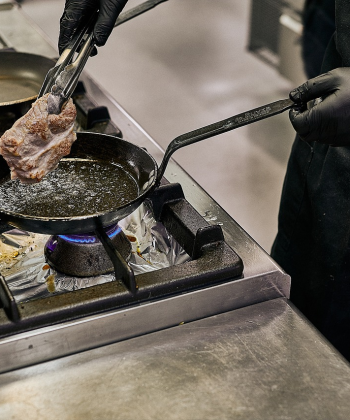Creating the ideal sauce for lobster-filled pasta is a culinary skill that transforms a simple dish into a luxurious dining experience. The right dip complements the flavors of the lobster, enhancing the overall taste. Matching and elevating the main ingredients is essential in gourmet cooking. It ensures the dish remains balanced and pleasurable with every bite.
This guide explores the art of crafting the perfect accompaniment for this elegant dish, explicitly focusing on lobster ravioli. The ultimate goal of this culinary journey is to ensure that each bite of lobster ravioli is deliciously memorable. By perfecting the sauce, one can genuinely accentuate the refined flavors of the lobster. Such attention to detail promises an exquisite and unforgettable dining experience.
Choosing the Right Base for Your Sauce
Cream-Based Sauces
Cream-based sauces are a classic choice for seafood pasta. A rich, creamy dip pairs well with the pasta’s delicate texture and balances the seafood’s robust flavors. Simmer heavy cream with minced garlic and finely chopped shallots until the mixture thickens to create an essential cream dip. Infusing the cream with herbs like tarragon or thyme can further complement the sweetness of the lobster.
Tomato-Based Sauces
A tomato base can be an excellent alternative for those who prefer a lighter ketchup. These provide a bright acidity that contrasts beautifully with the sweetness of the seafood. Begin by sautéing garlic and onions in olive oil, add crushed tomatoes, and cook until it thickens.
Enhancing Flavors with Additional Ingredients
Incorporating Wine
A splash of wine in the sauce can elevate the dish’s flavors. White wine is ideal for cream dips, providing a subtle acidity that slashes through the richness. A light red or continued use of white wine adds depth and complexity to tomato ketchup. Ensure the alcohol cooks off during simmering, leaving a concentrated flavor that enhances the dip.
Using Fresh Herbs and Spices
Fresh herbs and spices are crucial for characterizing your ketchup. Basil, parsley, and chives bring freshness to tomato-based sauces, while dill or chervil are striking in cream dips. Adding spices like nutmeg or a pinch of cayenne pepper introduces warmth and excitement, subtly enhancing the seafood’s flavor.
The Importance of Consistency and Texture
Achieving the Ideal Consistency
The sauce should coat the back of a spoon but still be fluid enough to mingle with the juices of the seafood. If a cream thickens too much, thin it with pasta water or additional cream. A more extended summer may be needed for tomato ketchup to achieve the right thickness.
Finishing Touches
Adding butter or a drizzle of high-quality olive oil before serving can give it a luxurious, silky finish. This technique, known as “mounting with butter,” involves whisking cold butter into the dip off the heat to create a glossy, richly flavored coating.
Pairing the Sauce with Seafood Pasta
Balancing Flavors
It should complement, not overpower, the delicate flavors of the seafood. Adjust seasonings carefully to ensure that the dip and pasta harmonize beautifully.
Serving Suggestions
Garnish the dish with natural herbs or grated Parmesan cheese if desired. Pair with a light white wine, such as Chardonnay or Pinot Grigio, which complements the creaminess and richness of the dish.
Mastering the art of lobster ravioli sauce requires attention to detail, from selecting the base and enhancing flavors to achieving the perfect consistency. With tolerance and practice, anyone can create a dip that elevates their pasta dish from good to extraordinary, turning every meal into a special occasion.



